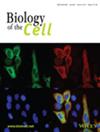Flotillins in membrane trafficking and physiopathology
Abstract
Flotillin 1 and 2 are highly conserved and homologous members of the stomatin, prohibitin, flotillin, HflK/C (SPFH) family. These ubiquitous proteins assemble into hetero-oligomers at the cytoplasmic membrane in sphingolipid-enriched domains. Flotillins play crucial roles in various cellular processes, likely by concentrating sphingosine. They primarily act as scaffolding protein complexes within membrane microdomains (also called lipid rafts) and induce endocytosis and trafficking. Their diverse cargos in the upregulated flotillin–induced trafficking (UFIT) pathway, including tyrosine kinase receptors, adhesion molecules, and neurotransmitter receptors, link them to a wide range of cellular processes and diseases. Consequently, flotillin upregulation has been associated with various pathological conditions such as cancer, metabolic disorders, and neurodegenerative diseases. Flotillins may also be co-opted by pathogens to facilitate their entry and growth within host cells.
In this review, we examined recent advancements in elucidating the structure and functions of the flotillin protein complex, including its implications in favoring the generation of sphingosine 1-phosphate, an essential bioactive lipid. We emphasized how the recent cryo-electron microscopy (cryo-EM) structure of a truncated cone-shaped cage composed of 22 copies of flotillin 1 and 2 subunits has enhanced our understanding of the flotillin complex organization within membrane microdomains and its role in membrane remodeling. We also explored how flotillin upregulation can perturb endosomal trafficking and contribute to various pathologies.
A comprehensive understanding of flotillin oligomer organization and function is crucial to developing targeted therapies for diseases associated with flotillin overexpression.


 求助内容:
求助内容: 应助结果提醒方式:
应助结果提醒方式:


